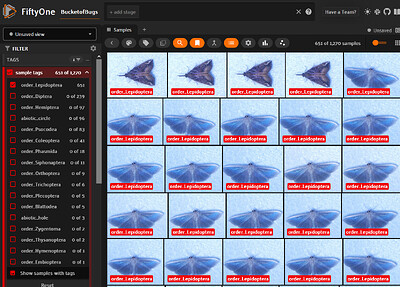THE MOTHBOX IS PUBLICLY RELEASED! Please check it out, and pass this information out to anyone who might be interested!
Mothbox: DIY Automated Insect Monitor For Conservation
Hi! I wanted to share a big open science project I have been working on at our little jungle hackerspace in Panama!
Mothbox
Is an ultra-low cost, high performance insect monitor for science and conservation. It’s an open-science tool you can make yourself right now for about $375 in off-the-shelf parts.
What it does
It works like a kind of camera trap for insects. It sits in a dormant state until the schedule you set causes it to activate, and it turns on a super bright UV lights, and begins capturing ultra-high resolution photos of any visiting insects. Then we built some post-processing AI software to help automatically ID the insects. First it uses a modified YOLO to detect where insects are in the image, and then a version of BioCLIP to automatically guess the ID of the insect. Finally a professional human verifies the IDs to build bigger and bigger datasets.
Why We Made This
We are working with scientists studying massive reforestation projects happening in Panama (by the way, the size of these projects, ecological implications, looming advent of biodiversity credits, and the many international and local communities involved is probably worth a whole extra discussion!).
Hubert Szczgiel was one of these scientists and came across a paper by Bjerge et al about creating automated Light Traps, and teamed up with us here at Digital Naturalism Labs to build a rough-and-ready ultra portable camera trap they can use in the incredibly harsh conditions we have here in Panama.
Benefits of Studying Insects for Environmental Health
Insects are important to study because they offer one of the highest-resolution ways to study the health of an environment. Especially in hyper-diverse ecosystems like Panama, there are over 16,000 species of just moths! Getting a picture of what species are present in an area provides a ultra-sensitive way of determining the impact of disturbances to forests or effect of reforestation.
There’s also a massive global insect decline that is absolutely terrifying, and this is a tool that can help study this impending disaster.
It’s Really Hard to Study Insects
Unfortunately, it’s incredibly time consuming to look at insects. There’s a LOT of them, and they are really SMALL. Traditionally scientists would just have to sit next to a light trap and manually make note of what insects show up. Other techniques, like Malaise traps, require killing insects, and then manually having to sort through the piles of collected insects later.
Other Projects
There are a couple other automated light trap projects doing cool research already too. None that we could find though could meet the requirement of our very scrappy project. Ones we had seen were either:
-Too expensive (some run $9,000-$15,000 per device)
-Too Large (we can’t backpack several of them up a mountain)
-Not high enough image quality (Our 64mp camera can automatically detect micromoths less than a millimeter long)
-Not open (We couldn’t find any information or design files on how to build them ourselves)
We Built Our Own to Share
So we started building our own to release to the community so that people around the world would have this new ability to automatically sense the insects near them.
We have been developing it for about 1.5 years doing test deployments across Panama, Peru, Ecuador, and the USA, and in March won a grant from Wildlabs.net and ARM to continue its development. Since March, we have developed two further iterations, and currently have dozens of mothboxes deployed across Panama.
Now we are ready to publicly release all the information so others can join us in seeing what all those cool bugs are up to!
All the Information
The full project website is here with meticulous documentation for building them yourself:
And all the design files are freely available on the github:
(An Instructable version is also available here too: https://www.instructables.com/Mothbox-DIY-Insect-Camera )
Thanks! Please Share!
Thanks for your time, and please help us share this project with anyone who may be interested. Also feel free to reach out to me for any additional information you may want about the project. Everything is open source including all the photos on the website, so feel free to use any you see for any publications you may share about this project.
-Andy
